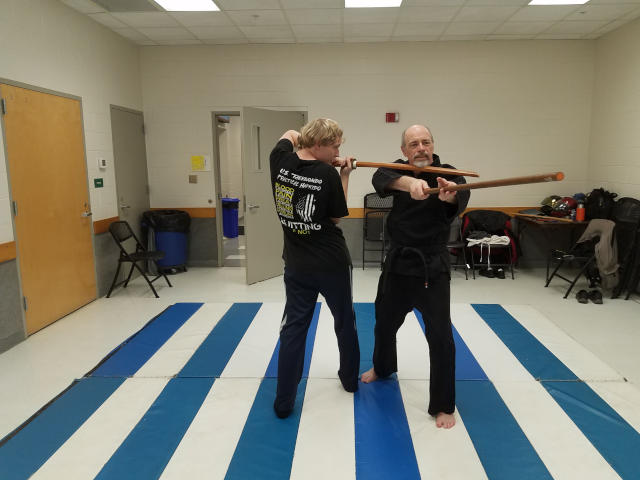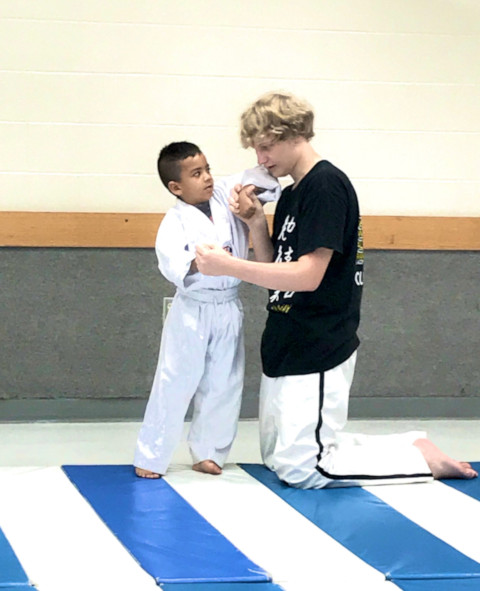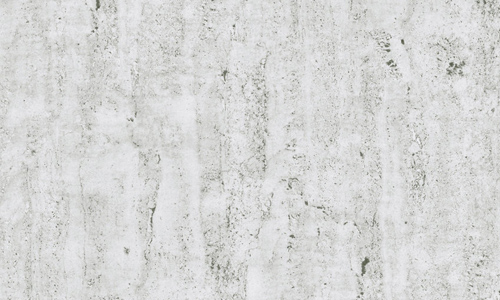
Too often, interested people go to a "martial arts" school and find all the trimmings and trappings. Not knowing what to look for, or knowing what to watch out for, they or their kids fall for pretty mirrors and equipment, snappy uniforms, and a line of patter. Then they wind up in an overpriced, overregulated sport that does NOTHING to prepare them for the realities of the street.
Go to a dojo, sit and watch for a while. Are the students pressed to put more and greater power into every strike, block, and kick? Are they even taught power? Or are they allowed to simply walk through kata without effort? The power you put in is the power you get back. How much of the class is dedicated to P.E. style calisthenics, and how much to technique? Just about anybody can do jumping jacks amd side bends. Do the warmups and stretching look anything like the techniques, or do they look like they were borrowed from a high school gym? When students ask questions, do the instructors stop and do their best to answer, or respond with "how dare you" and pushups? Most importantly, can the instructors do what they ask the students to do, or do they never demonstrate? Do the instructors take time to explain the application and breakdown of what is being struck and for what purpose, or is it just "do this, sweat, and don't ask questions"? Decide on this basis whether to train there or not.
We don't have a summer camp or after school program. What we do have is a scientifically based curriculum garnered from more than twelve martial arts systems pointed at one goal: the destruction of an enemy's ability to inflict violence. Period.
To that end, we work with different people different ways. The path to black belt for us is the path of the jeweler; we don't try to cut rubies as diamonds. Women are different than men are different from children. Simple fact. Although all are treated equally, kindly and given the same information, the focal points are often radically different. Not everyone is naturally strong, or fast, or a good tactician. We take advantage of these traits where strong, and build them up where they aren't. Some will be better groundfighters, others better kickers, hand strikers, and so on. Different people are naturally stronger in some ways than others, so our programs are personalized with this in mind.
Our program isn't easy. That leads to low standards. We believe in pushing students to the limits of their ability to grow stronger than anything that can threaten them. For those with special needs, we will craft a custom tailored program that utilizes their natural strengths to their best advantage.
Regardless of age or sensibility, we teach anatomy and nine basic body target zones from white belt day one and onward. For example, a yellow belt will be familiar with at least eight different hand positions. We also insist on a certain level of hand and leg impact conditioning, as blocking and striking require developing an ability to deal with impact. This is harmless and common where these arts originated, but generally not found in sports systems.
Having learned discipline of the hand and foot and having established good character and trust, interested persons may study nine different "weapons families". These include bo, jo, dai- and wakizashi-to, escrima, sai, kama, nunchaku, and many others.
Not all situations require lethal force, and we teach many options where other measures are warranted. For example, de-escalation, escapes, strategy, combat psychology, to name but a few. Also awareness and confidence go far to prevent or derail oncoming conflict.

In closing, our program is difficult, but it is presented with love and humor. There is a tight feeling of family within our dojo that we work hard to maintain. Our instructors teach with a passion for the arts to which we have dedicated our lives. We don't always know the answer, but ask the question and we won't rest until we find one.
Yours in Martial Science,
Steven D. Jaques
